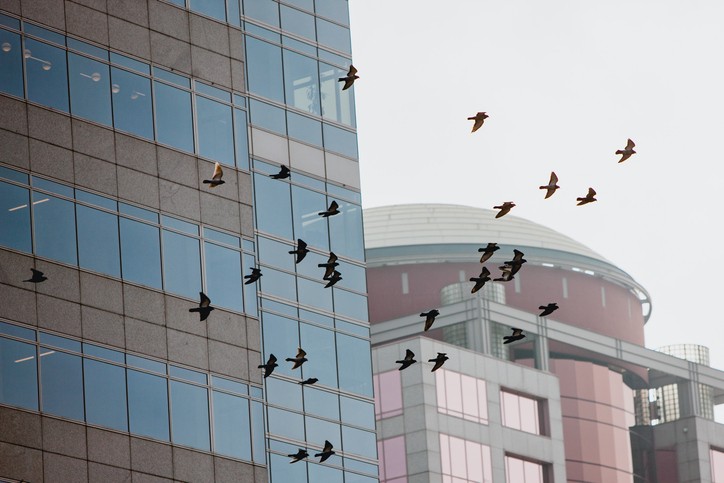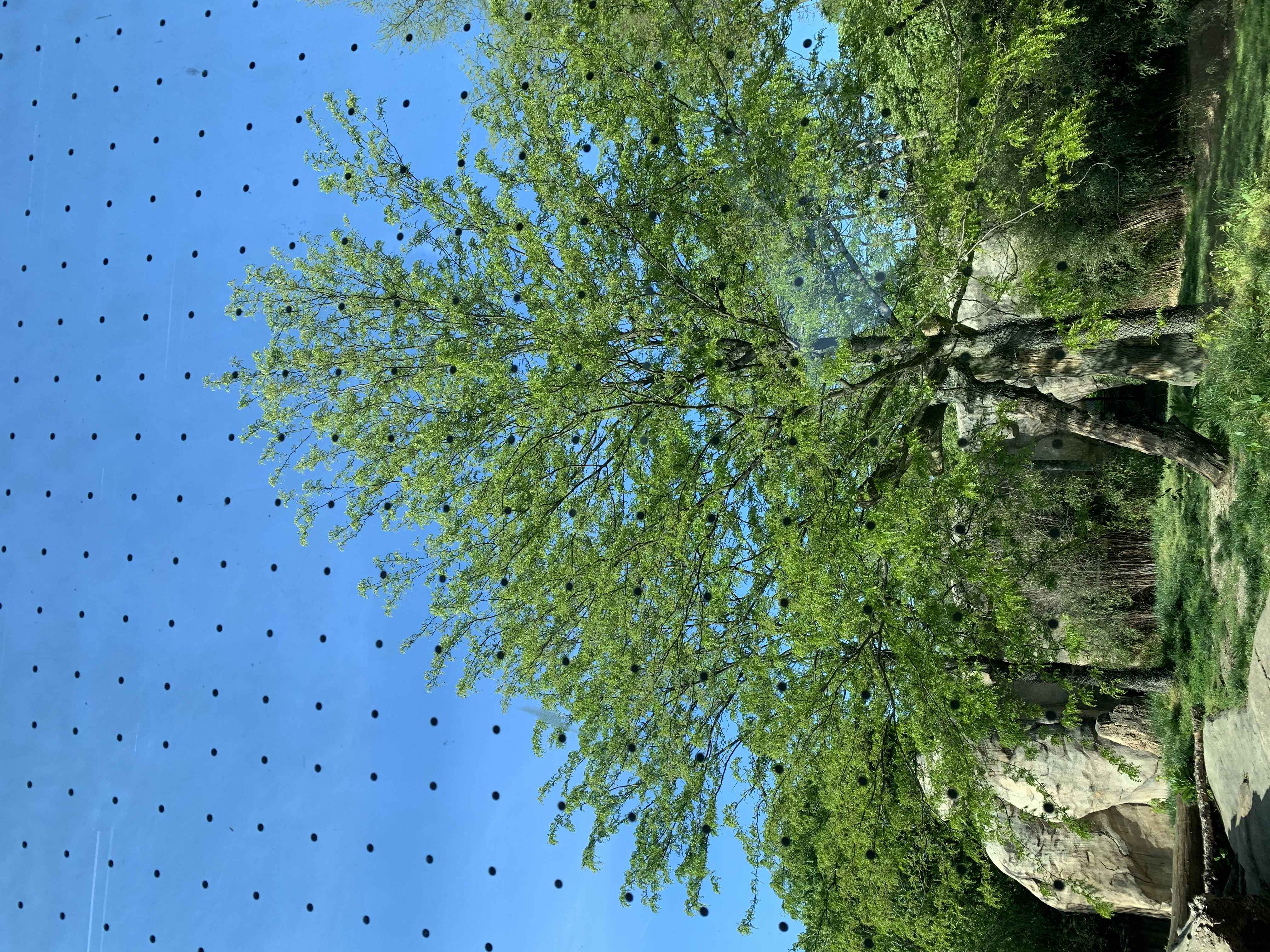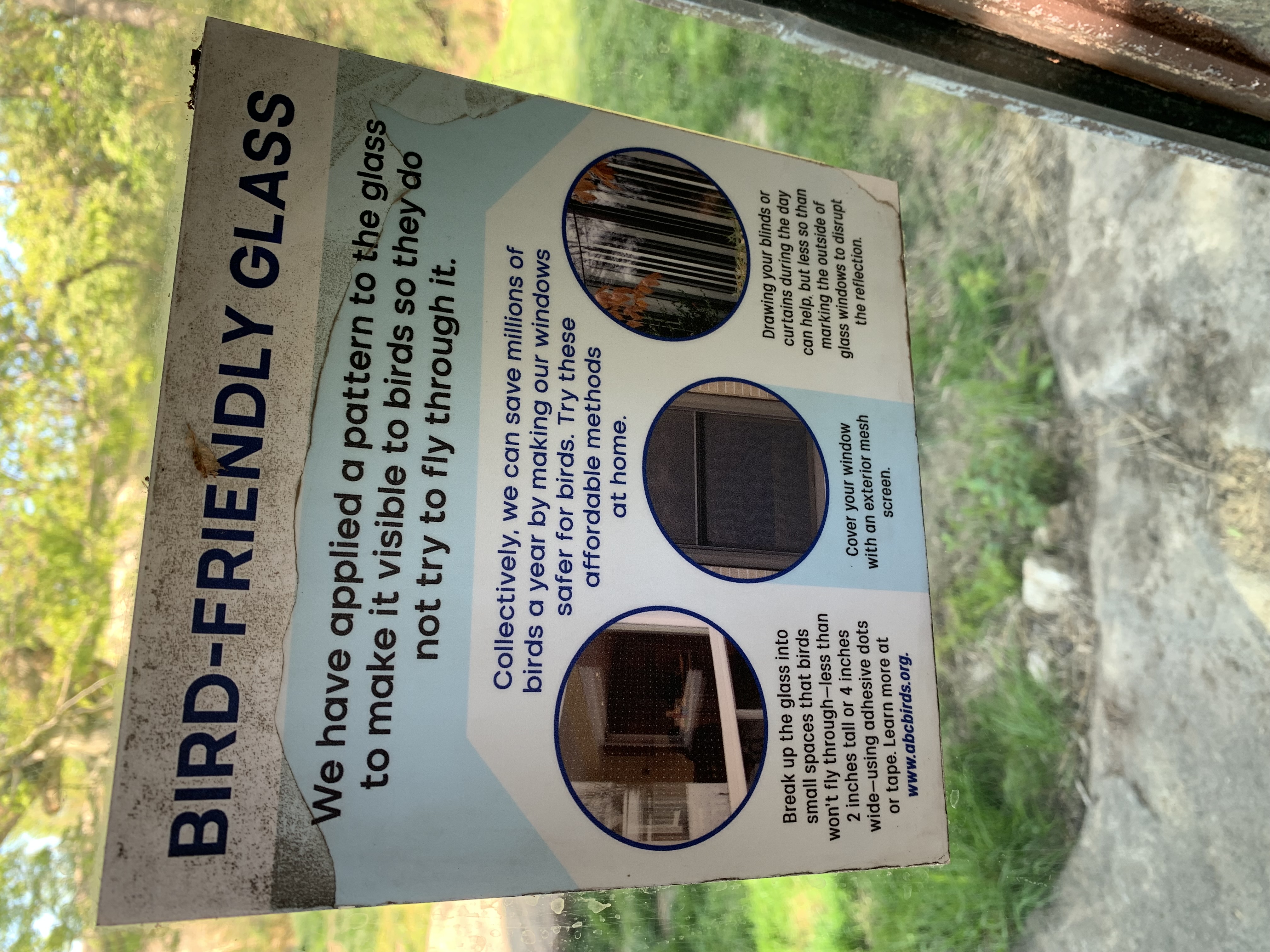
Preventable loss: A billion birds die each year from window strikes
The national problem is impacting songbird populations, UC biologist says
University of Cincinnati ornithologist Ron Canterbury displayed dozens of birds that died from striking glass windows in the city.
It’s a tiny fraction of those he and his students have collected in recent years for his long-term study on window-strike mortality. Here were magnolia warblers, American redstarts, white-throated sparrows, tiny hummingbirds and larger mourning doves and woodpeckers.
“It’s depressing,” he said.
Canterbury said these fatal collisions are having a significant effect on bird populations.
“Silent spring is coming,” Canterbury said, referencing the famous Rachel Carson 1962 book that inspired the environmental movement of the 1970s. “The urgency is now.”
As many as 1 billion birds die each year across the country after striking glass windows, according to the U.S. Fish and Wildlife Service. Some individual buildings are the site of thousands of bird mortalities each year. The losses are not incidental, Canterbury said.

UC biologist Ronald Canterbury examines some of the birds he and his students have collected during their surveys in Cincinnati. Warblers, sparrows, woodpeckers, hummingbirds and other birds die by the hundreds of millions each year after striking buildings in the United States, according to the U.S. Fish and Wildlife Service. Photo/Andrew Higley/UC Marketing + Brand
Canterbury has been studying bird mortality in Ohio for more than a decade and wild bird populations for 37 years. Even most dead birds are protected by federal law, so he needs a permit to collect them for his lab. He and his students walk a regular route to look for victims of window strikes in Cincinnati.
Some of the birds end up as mounted museum displays across the country. Others are used in the classroom to teach biology and ornithology. But they all end up getting recorded for Canterbury’s ongoing mortality study.
“Some birds like blue jays that are not long-distance migrants are better at avoiding windows,” Canterbury said. “But others are super-colliders — and they’re at risk of extinction.”
The decline of birds could affect human health, too.
Ronald Canterbury, Ornithologist in UC's College of Arts and Sciences
One such super-collider is the ovenbird, a spotted warbler with an orange crest that nests in mature woodlands.
“For every bird I find, you can multiply that many times over because you’re losing so many baby birds that year as well,” he said.
He worries that the ovenbird will follow the fate of golden-winged warblers, a species he has studied intensively in the Appalachians mountains. They, too, used to breed in Ohio. But golden-winged warblers have seen one of the biggest population declines of any bird in the past 50 years.
“They’re in bad shape compared to when I started studying them 30 years ago,” Canterbury said. “The last one I banded in Ohio as a breeding bird was 1998. They’re in real trouble.”

UC biologist Ronald Canterbury said some birds seem more susceptible to striking windows than others after seeing the reflection of tree branches in the glass. Photo/Andrew Higley/UC Marketing + Brand
Species on the brink
Canterbury said golden-winged warblers are considered an “umbrella” species, or one that through protection of its habitat protects other species. People love the colorful, little birds and want to protect them, which helps protect other imperiled species that rely on the same habitats.

UC biologist Ronald Canterbury uses mist nets to capture and band a golden-winged warbler in the Appalachian Mountains in this file photo. Canterbury said these warblers have sharply declined across their historic range. Photo/Ronald Canterbury
Some cities have launched lights-out campaigns to darken large office buildings at night so as to not interfere with migrating birds.
“Many of the birds I study, like sparrows, buntings, finches, warblers and thrushes, migrate at night,” Canterbury said.
The artificial light draws birds closer to cities where they are more likely to run afoul of windows and vehicle traffic, another big killer of birds.
“They’re often attracted to the lights of cities, which is creating a serious environmental issue,” he said.
Since some birds can fly as high as the world’s tallest mountains (the Rüppell’s griffon vulture has been seen flying at 37,000 feet), people might think that birds hit every floor of a building. But Canterbury said most collisions occur on the lowest three floors where birds see the reflections of landscaping or tree branches in the glass.
Glass connectors between buildings pose an especially big problem for birds, especially if there are trees or a landscaped courtyard on one side, he said.


The African lion exhibit at the Cincinnati Zoo & Botanical Garden features a grid of black dots on the glass with a sign explaining to the public how they benefit wildlife. Photos/Denis Conover
Simple ways to help
Federal regulators and nonprofit groups such as the National Audubon Society say there are lots of ways people can prevent deadly bird impacts on windows.
- Glass films featuring a visible pattern of squares or circles can help break up the illusion of open space.
- Patterned parachute cord can create a visual barrier for birds.
- Tempera or poster paint can provide a simple, temporary solution during spring or fall migration. It washes away with water and vinegar.
- Permanent solutions include custom-made glass featuring etched patterns or frost and ultraviolet patterned glass that is invisible to people but can be seen by birds.
“Basically, anything that disrupts the reflection of trees in the windows will work,” he said.
And for aggressive resident birds that peck their reflection, there is a similar easy solution. Canterbury said people can cover that window until the bird begins to nest and loses its aggressive disposition.
Canterbury said to help birds is to help ourselves. They help rejuvenate forests by spreading seeds.
“Birds eat millions of mosquitoes each year, so they help prevent the spread of mosquito-borne illness,” he said. “The decline of birds could affect human health, too.
“As they decline, it’s spelling big trouble for the health of ecosystems.”
Featured image at top: Wildlife regulators estimate that as many as 1 billion birds die each year after striking windows in the United States. UC Professor Ronald Canterbury is trying to raise public awareness about the problem in Cincinnati. Photo/Tim Newman/Unsplash

UC ornithologist Ronald Canterbury has been studying wild birds for 37 years. Photo/Andrew Higley/UC Marketing + Brand
Innovation Lives Here
The University of Cincinnati is leading public urban universities into a new era of innovation. Our faculty, staff and students are saving lives, changing outcomes and bending the future in our city's direction. Next Lives Here.
Related Stories
How to keep birds from flying into your windows
July 3, 2024
UC College of Arts and Sciences professor Ron Canterbury tells the Indianapolis Star that simple steps can prevent birds from strike windows around your home or business. Yahoo! News shares the story.
UC study: Brain organ plays key role in adult neurogenesis
July 2, 2024
The University of Cincinnati has published research in the Proceedings of the National Academy of Sciences that found the choroid plexus and cerebrospinal fluid play a key role in maintaining a pool of newly born neurons to repair the adult brain after injury.
UC’s microchip training includes innovative VR
July 2, 2024
To build a virtual microchip factory, University of Cincinnati doctoral students turned to the real one where they work. UC launched a new training program for microchip manufacturing in advance of the new fabrication plant Intel Corp. is opening in Ohio.
University-wide Qualtrics license coming soon
July 2, 2024
The new university-wide Qualtrics license will provide current UC students, faculty, and staff members access to Qualtrics software, support, and technical assistance under a centralized license.
Bridging creativity and commerce
July 1, 2024
At the University of Cincinnati’s Carl H. Lindner College of Business, Victoria Mrofchak stands out not just for her academic excellence but for her remarkable blend of creativity and business acumen. A fourth-year marketing major with a minor in management and fine arts, scholarships help Mrofchak shape her future at the intersection of art and commerce.
Get to know Lisa Huffman, new dean of UC's CECH
July 1, 2024
UC News spoke with incoming CECH dean, Lisa Huffman, about her past experiences, the role family plays in her life, academic philosophies, goals for her time in this position and more. As we welcome the newest dean to University of Cincinnati, we encourage you to read on to learn more about Dean Huffman.
Meet UC’s Miss Ohio
July 1, 2024
UC biomedical science student Stephanie Finoti credits UC for helping to prepare her for the Miss Ohio Scholarship Pageant. She will represent Ohio in the national competition in January.
UC alum visits campus to teach students about footwear design
June 28, 2024
A 2011 graduate of design, UC alum Charley Hudak has seen his career trajectory go from intern to creative director for Tiger Woods' new athletic footwear brand, Sun Day Red. While he may run with the biggest cat in golf, Hudak doesn't forget his Bearcat roots and comes back each summer to teach youth about footwear design at DAAP Camps.
Cincinnati researchers want to know if MRIs can work better
June 28, 2024
WVXU and the Cincinnati Business Courier highlighted a new collaboration between the University of Cincinnati College of Medicine, UC Health GE HealthCare, JobsOhio, REDI Cincinnati and Cincinnati Children’s to create an MRI Research and Development Center of Excellence located on UC’s medical campus.
UC 1819 Innovation Hub workshop spreads AI awareness
June 28, 2024
Microsoft and Disrupt Now joined forces to run a June 24-27 seminar at UC’s 1819 Innovation Hub teaching Cincinnati residents how to responsibly use AI.
